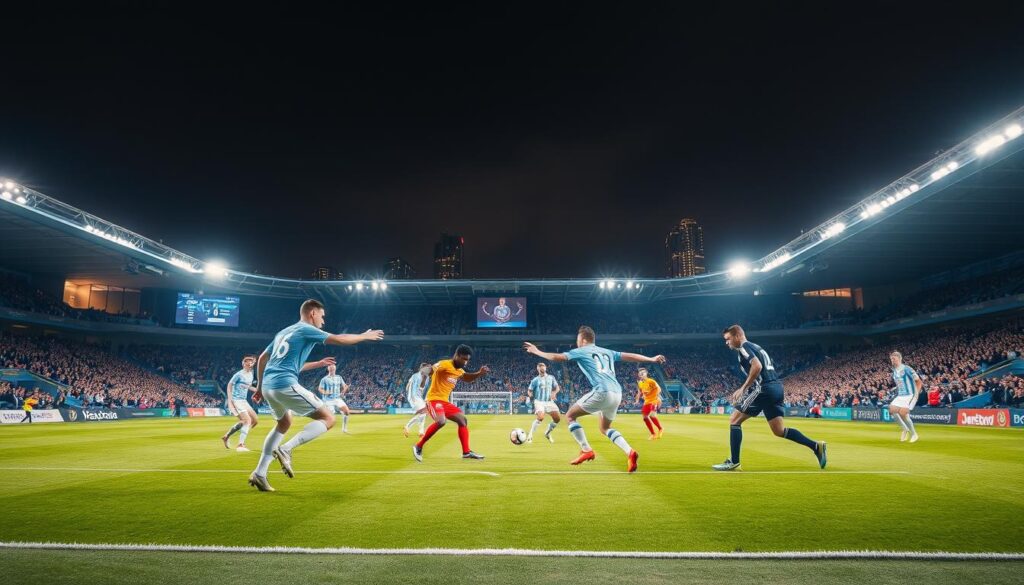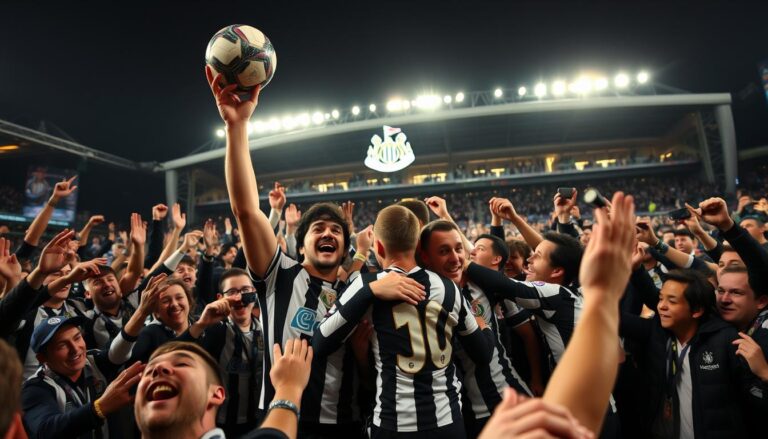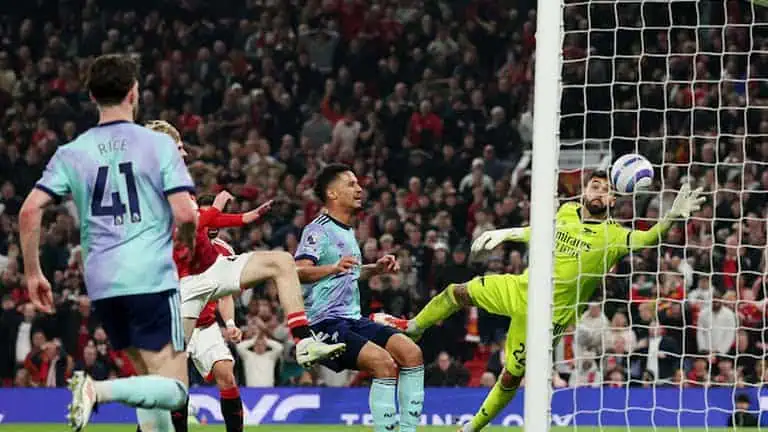The Premier League clash between Manchester City and Brighton & Hove Albion delivered a gripping encounter, ending in a 2-2 draw that kept fans on the edge of their seats from the first minute.
The match was defined by early pressure and pivotal moments, with Erling Haaland converting a penalty in the 11th minute to give Manchester City the lead. Brighton responded swiftly, with Pervis Estupiñán equalising just 11 minutes later. Omar Marmoush then stepped up for Manchester City, scoring a decisive goal in the 39th minute to restore their advantage.
Despite Manchester City’s dominant possession (61%), Brighton showed resilience and tactical acumen. The Seagulls found an unlikely equaliser in the 48th minute through an own goal by Abdukodir Khusanov, ensuring both teams shared the points.
This thrilling draw holds significant implications for both sides in the context of the Premier League standings. Manchester City and Brighton, separated by just one point and two places in the table, are both embroiled in a heated battle for European qualification. The match not only showcased the tactical prowess of both teams but also highlighted their ability to perform under pressure.
Key Takeaways
- Erling Haaland’s penalty conversion marked another milestone in his remarkable Premier League career.
- Omar Marmoush’s contribution was instrumental in maintaining Manchester City’s competitive edge.
- Brighton’s resilience and tactical adaptability earned them a crucial point in their pursuit of European qualification.
- Both teams demonstrated their ability to handle pressure, with pivotal plays shaping the outcome of the game.
- The draw underscores the intense competition in the Premier League, with both sides vying for a top-seven finish.
Match Overview and Key Moments
The clash between Manchester City and Brighton was a spectacle of intensity and strategic plays, culminating in a 2-2 draw that captivated fans throughout.
Opening Moments and Early Pressure
The match began with both sides applying significant pressure, each seeking to dominate. Manchester City displayed their signature possession-based game, while Brighton focused on quick counter-attacks. An early highlight was Kaoru Mitoma’s disallowed goal, which set the tone for a fiercely competitive first half.
Both teams made initial mistakes, but their defensive lines held firm. Brighton’s strategy to exploit set-pieces began to pay off, creating several dangerous opportunities. Meanwhile, Manchester City’s relentless pressure tested Brighton’s defense repeatedly.
Turning Points and Decisive Plays
The game’s dynamics shifted with Erling Haaland’s penalty in the 11th minute, giving Manchester City the lead. This pivotal moment showcased Haaland’s clinical precision and added pressure on Brighton to respond.
Brighton’s equalizer came through a well-executed free-kick by Pervis Estupiñán, highlighting their set-piece prowess. The match continued with both sides creating chances, each looking to break the deadlock. A corner kick led to further pressure, but neither could capitalize, leaving the score level at halftime.
The second half saw Brighton’s resilience pay off with an own goal, securing a crucial point. Despite City’s possession dominance, Brighton’s tactical adaptability ensured they remained competitive.
This draw significantly impacts both teams’ Champions League aspirations, keeping their European qualification hopes alive in a tightly contested Premier League race.
man city vs brighton: Tactical Breakdown and Key Performances
Pep Guardiola’s tactical approach at the Etihad Stadium was a masterclass in adaptability. His selection decisions, including the omission of certain key players, showcased his ability to rotate the squad while maintaining a competitive edge. This strategy allowed Manchester City to control the tempo of the game, with 61% possession, while Brighton focused on quick counter-attacks and set-piece opportunities.
Guardiola’s Strategy and Selection Decisions
Guardiola’s formation adjustments played a pivotal role in the match dynamics. By benching some standout players, he ensured freshness and tactical flexibility. This decision kept Brighton guessing, as Manchester City maintained their signature possession-based style but with a more dynamic edge. The team’s ability to adapt during the second half was crucial, as they responded to Brighton’s resilience with calculated changes that nearly secured the win.
Impact of Key Players: Haaland, Marmoush, and Others
Erling Haaland’s penalty in the 11th minute was a defining moment, showcasing his clinical precision. Omar Marmoush’s decisive goal in the 39th minute further highlighted his growing influence in the team. Ilkay Gündogan’s role in orchestrating play from midfield was instrumental, while Kevin De Bruyne’s six chances created demonstrated his creativity. Brighton’s tactical acumen, particularly in set-pieces, was evident through Pervis Estupiñán’s equalizer and their overall resilience.
The game’s turning points were marked by pivotal plays within the box. Manchester City’s shots on target (7) and Brighton’s unexpected equaliser through an own goal underscored the match’s unpredictability. Despite City’s dominance in possession and shots (18-12), Brighton’s ability to level the score highlighted their tactical adaptability and determination.
The match also revealed the importance of defensive contributions. Ederson’s four critical saves and Jason Steele’s seven saves, including a double save against Haaland and Foden, were key in keeping the scoreline balanced. Rodri’s 112 passes with 94% accuracy exemplified Manchester City’s control, while Brighton’s Josko Gvardiol’s four interceptions showcased their defensive solidity.
In the end, the draw reflected the tactical prowess of both teams. Guardiola’s management of the game and the contributions of his selected team were evident, but Brighton’s ability to adapt and capitalise on opportunities ensured they left with a crucial point. This encounter not only highlighted individual brilliance but also the strategic depth of both sides in their pursuit of European qualification.
League Implications and Future Fixtures
The 2-2 draw between Manchester City and Brighton has significant implications for their league standings and future fixtures. Currently, Manchester City sits in fifth place, narrowly ahead of Brighton, who are chasing closely. This result means both teams dropped valuable points, potentially affecting their European qualification hopes.
The draw underscores the competitive nature of the Premier League, with teams vying for top-seven finishes. Manchester City’s failure to secure three points could hinder their push for a higher position, while Brighton’s resilience keeps them in the race for European spots.
Referee Simon Hooper’s decisions were pivotal, particularly in key moments like the penalty and disallowed goals. His calls significantly influenced the match’s outcome, drawing attention to the role of officiating in high-stakes games.
Nico Gonzalez’s near miss symbolized the match’s intensity and the fine margins that can alter results. Such moments highlight the need for precision in crucial situations, which could prove decisive in future fixtures.
Looking ahead, Manchester City faces challenging away games, while Brighton must maintain their form to stay competitive. Both teams will need to learn from this encounter to navigate their remaining schedules effectively.
Conclusion
The Premier League encounter between Manchester City and Brighton ended in a thrilling 2-2 draw, showcasing a balanced performance from both sides. This match highlighted the tactical prowess and resilience of both teams, as they shared the spoils in a game filled with pivotal moments.
The second half was particularly decisive, with Brighton’s equaliser early on setting the tone for a fiercely competitive period. Ilkay Gündogan’s influence was evident throughout, as he orchestrated plays from midfield, while both teams’ strategic approaches attempted to secure a victory. However, the inability to defend crucial moments and convert chances into goals meant neither could claim all three points.
Looking at the broader season perspective, this draw has significant implications for both clubs’ hopes of finishing in the top four. Manchester City’s fifth-place standing and Brighton’s close pursuit underscore the intense competition for European qualification. The match also revealed areas for improvement, particularly in defensive lines and offensive efforts, as both teams aim to strengthen their positions in the remaining fixtures.
In conclusion, this encounter was a testament to tactical brilliance and the fine margins that define results in the Premier League. As the season draws to a close, both teams will need to learn from this match to navigate their remaining schedules effectively and achieve their European aspirations.


